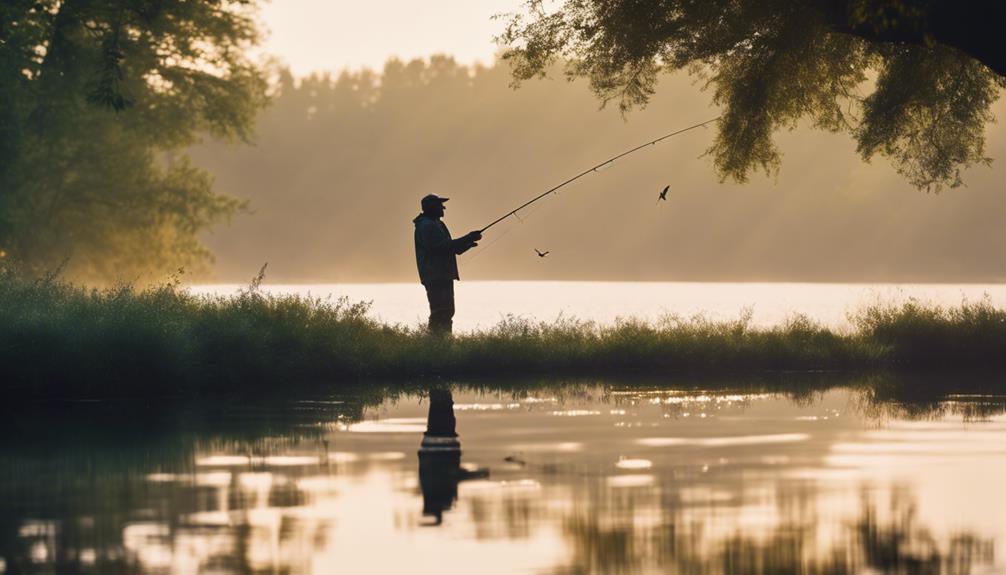Fly fishing is not just about the gear or the location; it’s also about mastering the art of casting. A good fly fishing cast can make the difference between a successful day on the water and coming home empty-handed. In this comprehensive guide, we will explore various techniques, tips, and tricks to improve your fly fishing cast, ensuring you’re well-prepared for your next fishing adventure.
Understanding the Basics of Fly Fishing Cast
Before delving into advanced techniques, it’s essential to grasp the fundamentals of a fly fishing cast. The main components of a cast include the forward cast, back cast, and the pickup. The forward cast propels the fly line and lure forward, while the back cast allows you to build momentum. The pickup involves lifting the line off the water to initiate the cast. Each of these elements is crucial for achieving distance, accuracy, and presentation.
The Importance of Proper Fly Rod Grip
A comfortable and correct grip on your fly rod is paramount for an effective fly fishing cast. Your index finger should rest on top of the rod, while your other fingers wrap around the handle. This grip provides more control and stability during the casting motion. An improper grip can lead to awkward movements and decreased casting efficiency. Practice your grip regularly to ensure it becomes second nature, allowing you to focus on your casting technique.
Mastering the Double Haul Technique
One of the most effective techniques to improve your fly fishing cast is the double haul. This method involves pulling the line with your non-dominant hand during both the back cast and forward cast. The double haul increases line speed and allows for longer casts, making it ideal for reaching distant fish. To master this technique, practice coordinating your hand movements with your casting rhythm. Begin with short distances and gradually increase as you become more comfortable.
Choosing the Right Fly Line for Your Cast
The type of fly line you use can significantly affect your casting performance. Fly lines come in various weights, tapers, and materials, each designed for specific fishing conditions. For example, a weight-forward line is excellent for distance casting, while a double taper line offers more delicate presentations. Choosing the right line for your fly fishing cast can enhance your accuracy and improve your overall fishing experience. Always consider factors such as water conditions and target species when selecting your fly line.
Finding Your Casting Rhythm and Timing
Casting is as much about rhythm and timing as it is about technique. A smooth, rhythmic cast allows for better distance and accuracy. To find your rhythm, practice casting in slow, deliberate motions. Gradually increase your speed while maintaining control. Timing is equally important; your back cast should be completed before initiating the forward cast. This coordination ensures that your line has adequate tension and helps prevent tangles and unwanted knots.
Practicing in Different Environments
To become proficient at fly fishing casting, practice in various environments. Each location presents unique challenges, such as wind, current, and obstacles. Try casting on calm days and windy days to understand how different conditions affect your fly fishing cast. Additionally, practice on both freshwater and saltwater to gain experience with different species and habitats. The more diverse your practice, the better prepared you’ll be for real fishing situations.
Utilizing Target Practice to Improve Accuracy
Improving your accuracy is a vital aspect of perfecting your fly fishing cast. Set up targets at various distances and practice casting to them. Use objects like hula hoops or floating targets to simulate the conditions you’ll encounter while fishing. Focus on your accuracy and consistency rather than distance alone. Over time, you’ll develop the precision needed to place your fly exactly where you want it, increasing your chances of landing a catch.
Common Mistakes to Avoid in Fly Fishing Cast
Even experienced anglers can make mistakes when it comes to casting. Common errors include overloading the rod, improper timing, and casting too quickly. Overloading the rod can lead to inaccurate and inefficient casts. To avoid this, ensure that your cast matches the weight of your fly line. Additionally, focus on maintaining a smooth, controlled motion. Regularly review your casting technique and seek feedback from experienced anglers to identify areas for improvement.
In conclusion, mastering the fly fishing cast is crucial for any angler looking to enhance their fishing experience. By understanding the basics, practicing consistently, and refining your techniques, you can become a more proficient fly fisherman. Remember to choose the right gear, maintain proper form, and never stop learning. With dedication and practice, your fly fishing cast will improve, leading to more successful days on the water. Happy fishing!
